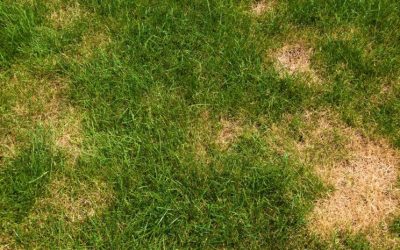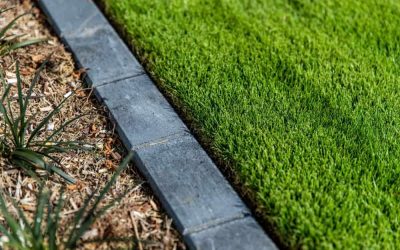How to Dethatch a Lawn
Quick Links
What Is Thatch?
Thatch is a layer of grass blades, stolons, rhizomes and other organic matter that has not yet broken down or decomposed.
This layer that lays between the soil and your grass blades is an important part of a healthy lawn.
The benefits of a thatch layer are similar to adding a layer of mulch to your lawn.
The thatch layer moderates soil temperature, retains moisture during warm months and adds nutrients into the soil.
While it’s an important part of a thriving lawn, too much thatch can also be troublesome.
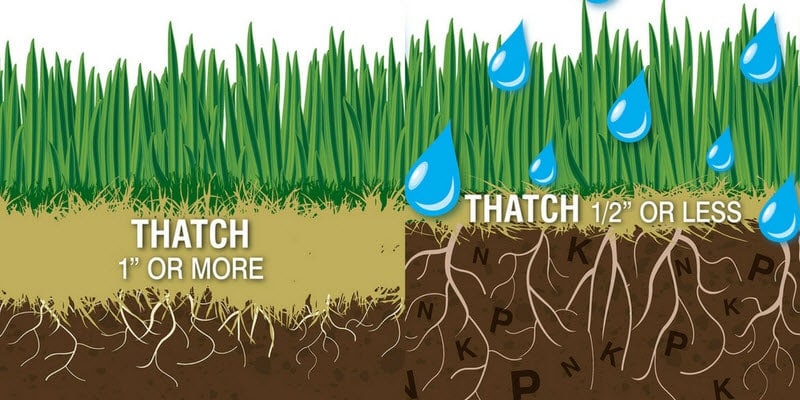
Why Should You Dethatch Your Lawn?
Thatch starts to build up when your lawn produces more organic material than it can break down.
This is often because your grass is growing too quickly as it’s being watered more than necessary or being fed too much nitrogen.
When your thatch layer starts to become a problem is once it’s thicker than 1 inch.
With a thatch build-up, air and water can no longer reach the soil easily (and therefore your lawn’s roots), insects are more likely to make a home there, and your lawn is more susceptible to lawn disease.
You don’t necessarily need to measure a thatch layer to know when it is too thick. You can also try to stick your finger into the soil.
If it’s too difficult to do, you probably have a thatch problem. Another way to tell is if your lawn starts to feel spongey.

How To Dethatch Your Lawn
There are few ways to dethatch your lawn.
Depending on the size of your lawn and how bad the thatch build-up is, you may decide to use a dethatching rake, mow or use a specialised dethatching machine.
After you dethatch your lawn, it’ll look quite poorly.
You should rake up and loose debris and apply some fertiliser to help it recover.
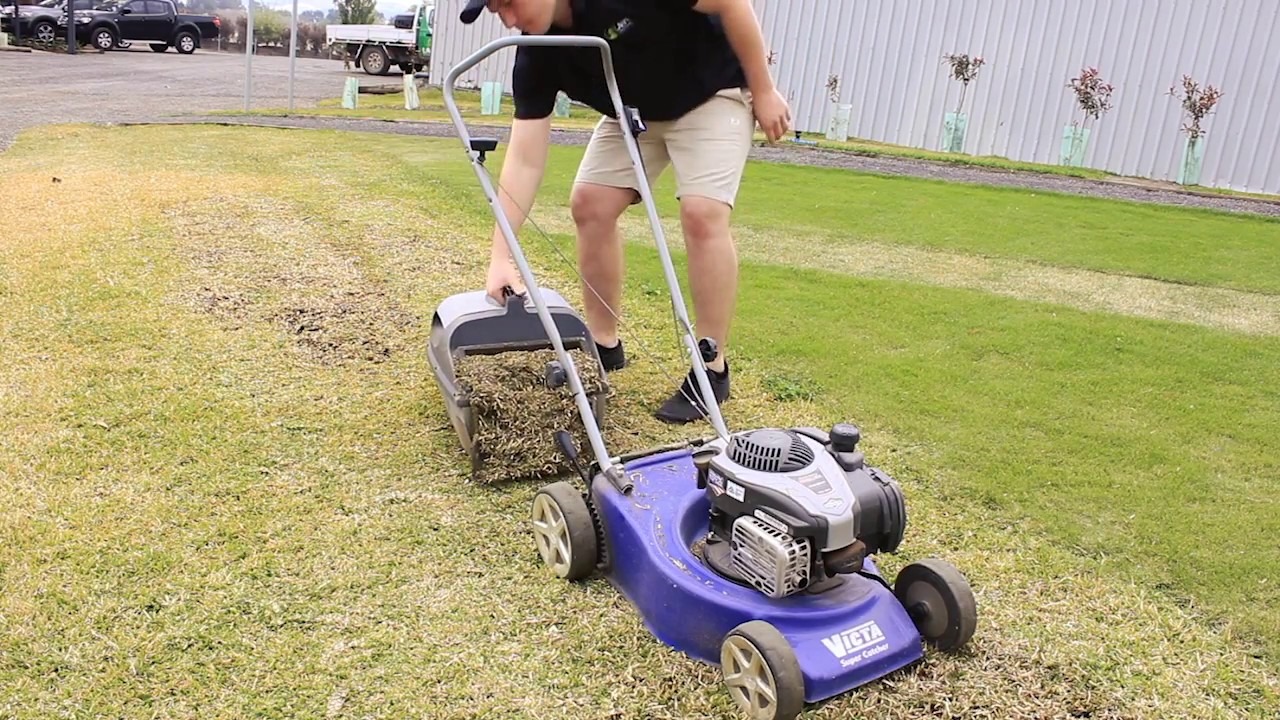
Dethatching With A Lawnmower
Mowing low a couple of time, reducing the height gradually each time, will also reduce the thatch layer in your lawn.
However, if you mow too low too quickly, you risk scalping your lawn.
It’s best to do this towards the end of spring as your lawn will have time to recover from these low-mows.
In the cooler months, your grass won’t grow back fast enough and could suffer irreparable damage.
How To Avoid Scalping Your Lawn
When a lawn is cut too low, scalped, it will no longer have the ability to produce enough food to repair itself.
You’ll know when your lawn has been scalped when brown, sheared-looking patches appear.
To avoid scalping your lawn, never remove more than one-third of the grass blade at a time, keep your mower blades sharp and make sure your ground is even.
You can fix uneven ground by adding topsoil to fill in the dips.

Dethatching Your Lawn With A Rake
Alternatively, you can dethatch using a rake. Simply push the rake tines down into the grass so that they reach the thatch layer beneath.
Although a normal household rake will work, a dethatching rake will get better results easier.
Dethatching with a rake is one of the less invasive methods.
As you rake, the tines will pull the thatch and dead matter from the grass and allow more air and water to reach the soil.
The raking method, however, won’t work for particularly built-up thatch layers.
Should You Buy Or Hire A Specialised Dethatcher?
A specialised lawn dethatcher may be needed if you have a particularly bad thatch problem.
These machines make dethatching pretty easy, making them a good option for large lawns or thick thatch layers that have built up over years.
As specialised dethatcher can be quite costly for something you only need to do once a year so it’s usually best to hire these from your local lawn care company.
Make sure to check what the recommended cutting height is for your lawn type and follow the instructions the hire company provides.
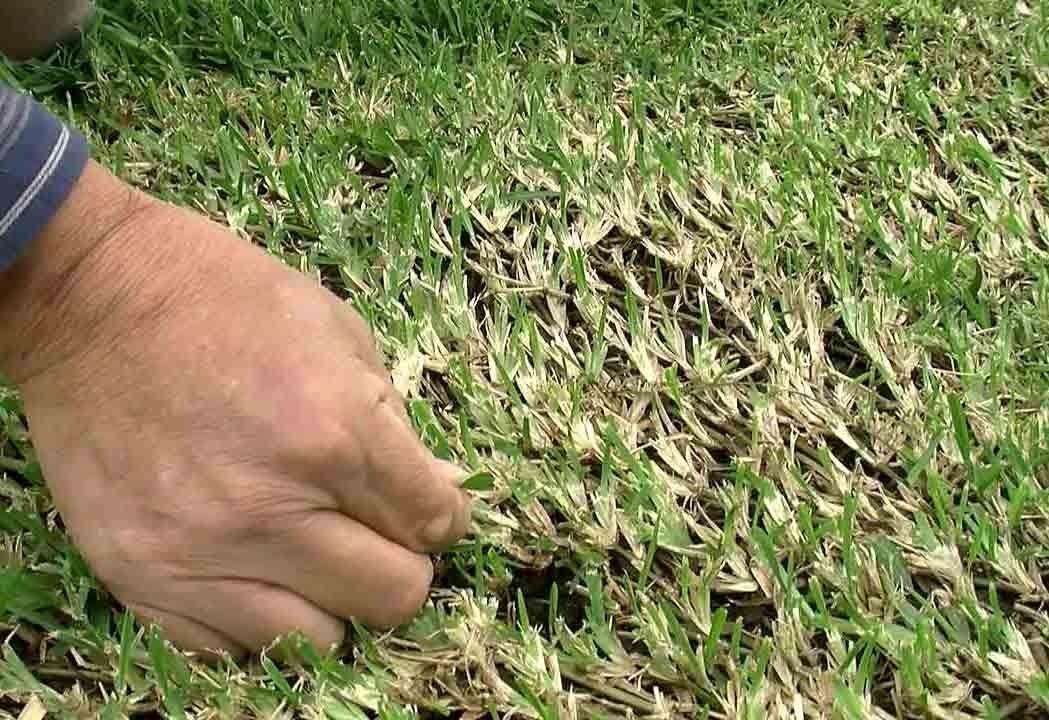
When Should You Dethatch Your Lawn?
Dethatching is best done towards the end of spring and only for warm-season grasses.
Cold-season grasses won’t survive dethatching.
Dethatching outside the growing season, or too late in the growing season will heighten the risk of your lawn being scalped and dying back.
However, it’s important to dethatch each year to stop it from building up too much.
What Comes Next? How To Avoid Thatch Build-Up
As thatch build-up is a problem with too much organic matter building up quicker than the older organic matter can break down.
This usually occurs after your lawn has gone through a period of rapid growth.
As such, the best way to prevent your thatch layer building up is to avoid overfertilising your lawn during peak growing season or overwatering your lawn.
If you do find that your thatch layer continues to build-up too quickly, you should make sure that you’re using a catcher when you mow your lawn.
Worms also help to decompose organic material in your thatch layer.
Unfortunately, pesticides kill worms as well as the target pest. Avoiding these as much as possible will help to encourage faster decomposition.

read more!
recent posts
What is the Best Grass for a Lawn? A Complete Guide to Top Choices
Discover the best grass options for your lawn with our complete guide. Make informed choices for a lush, healthy yard. Read more to find your ideal grass!
Choosing the Right Weed Killer for Your Sir Grange Zoysia Lawn
Discover the best weed killer for Sir Grange Zoysia and essential tips for effective application. Enhance your lawn’s health and beauty!
Why Is My Zoysia Grass Dying? Common Causes and Solutions to Revive It
Is your Zoysia grass struggling? Discover common causes of decline and effective solutions to restore its health. Read the article for expert tips!
How To Repair Zoysia Grass
Learn effective solutions to repair Zoysia grass and achieve a lush, healthy lawn. Discover practical tips and techniques to restore your yard today!



